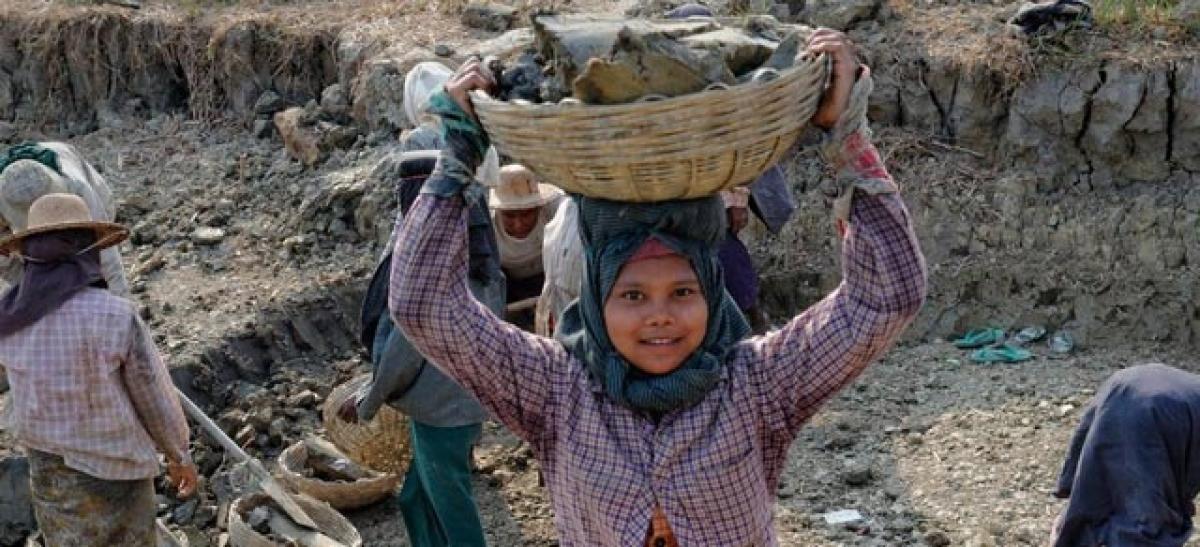Live
- NABL signs pact for on-site testing of materials in construction projects
- Cantonment MLA Sri Ganesh Advocates for New RTO Office Amid Road Expansion Concerns
- UN humanitarian chief meets Sudan's Al-Burhan to address aid crisis
- Zimbabwean president calls for international support to resolve debt issues
- Judiciary Plays a Key Role in the Indian Constitution - Senior Civil Judge A. Sri Devi
- Karnataka BJP Stands Strong Against Waqf Board Misuse
- Keerthy Suresh in sultry avatar for Bollywood debut ‘Baby John’
- Ram Charan pre-look for ‘RC16’ sets internet on fire
- BBMP Accused Of Misappropriating ₹46,300 Crore In Public Funds
- Tensions Mount In Manipur As Missing Meitei Man Sparks Protests
Just In

When Chandrasekhar Reddy travelled to the northeast in 2011, the director was looking for material for a film on forests in the region famed for its misty hills and waterfalls.
Mumbai : When Chandrasekhar Reddy travelled to the northeast in 2011, the director was looking for material for a film on forests in the region famed for its misty hills and waterfalls. Instead, he found children as young as 5 years old working in coal mines. Horrified yet fascinated, Reddy stayed in Meghalaya for several months, befriending the children and their families, and slowly gaining access to the mines, many of which are illegal.
Reddy eventually gathered enough material for his first feature-length documentary, ‘Fireflies in the Abyss’, which was released last week after it won the award for Best Film in the Mumbai International Film Festival in February. Set in the Jaintia Hills, the documentary shows young boys descending steep chutes little more than “rat holes” with makeshift ladders to dig coal from hard rock with just a pickaxe and a flashlight.
“The fact that children were working in the mines came as a complete shock to me,” Reddy told the Thomson Reuters Foundation. “So many of my preconceived notions of what is right and wrong, the state, the law, the police, families and relationships they were all turned on their head, as it is a very different world there,” he said.
The film tells the story of Suraj, an 11-year-old boy, who was born in India of Nepali parents. He lives with his sister and father, a miner who is drunk most of the time. His mother is dead. Suraj desperately wants to go to school, but is expected to work to help feed the family. Despite a law that bans child labour, there are 5.7 million child workers in the country aged between five and 17, according to the International Labour Organisation. It estimates there are 168 million child workers globally.
Activists say around a fifth of all mine workers are children. Many work for more than 10 hours a day in filthy conditions, exposed to coal dust, silica dust, noxious fumes and the risk of injury or death from collapsing mines. “Fear won’t get any work done; you need to give up worrying for your life… But if you die here, it’s a dog’s death,” said one of the young boys with Suraj.
In Meghalaya, which means “abode of clouds” in Sanskrit, many workers are from neighbouring Nepal and Bangladesh. They are often trafficked with the promise of good jobs, or are in debt bondage to powerful mine owners. In a 2012 report, the National Commission for Protection of Child Rights, an umbrella group of charities, said children working in the mines in Jaintia Hills faced “hazardous conditions” with no safety or social welfare measures.
While state officials have downplayed the prevalence of child labour, the report said the presence of rat holes indicated child workers since it was “humanly not possible for an adult to enter those holes to extract coal”. In the end, Suraj gets his chance at receiving an education with the help of some friends, who also worked in the mines. “The mine workers live in such uncertainty, such desperation, yet there is so much camaraderie and solidarity,” said Reddy. “Perhaps that’s what keeps them going, and gives some of them the hope that things can change.”

© 2024 Hyderabad Media House Limited/The Hans India. All rights reserved. Powered by hocalwire.com







